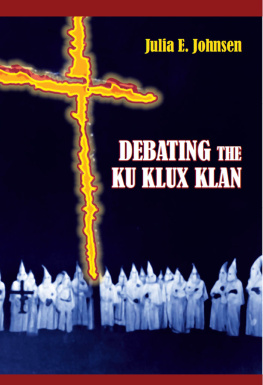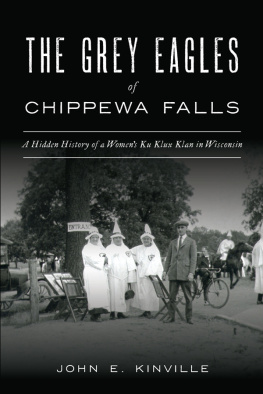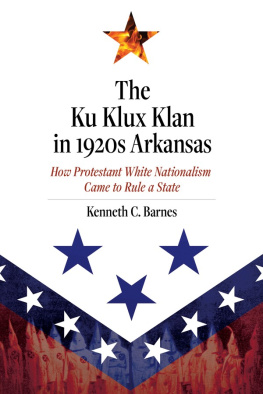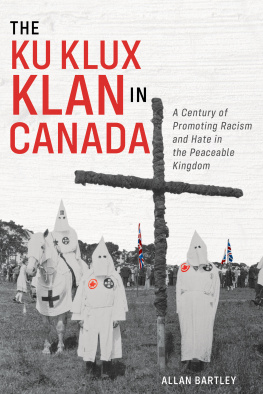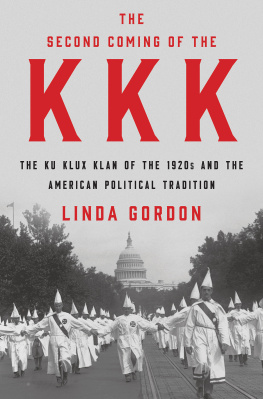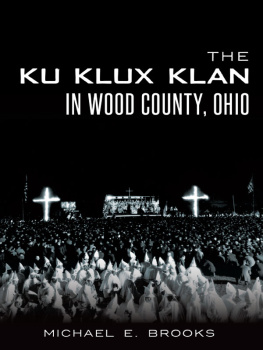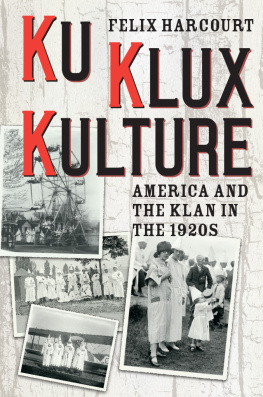Debating the
Ku Klux Klan
Also from Westphalia Press
westphaliapress.org

Debating the
Ku Klux Klan

by Julia E. Johnsen

WESTPHALIA PRESS
An imprint of Policy Studies Organization
Debating the Ku Klux Klan
All Rights Reserved 2014 by Policy Studies Organization
Westphalia Press
An imprint of Policy Studies Organization
1527 New Hampshire Ave., NW
Washington, D.C. 20036
ISBN-13: 978-1-63391-137-6
ISBN-10: 1633911373
Cover design by Taillefer Long at Illuminated Stories:
www.illuminatedstories.com
Daniel Gutierrez-Sandoval, Executive Director
PSO and Westphalia Press
Rahima Schwenkbeck, Director of Media and Marketing
PSO and Westphalia Press
Updated material and comments on this edition
can be found at the Westphalia Press website:
www.westphaliapress.org
CONTENTS
KU KLUX KLAN
JULIA E. JOHNSEN, Compiler
INTRODUCTION
The Ku Klux Klan is an anomaly in American life. The extreme secrecy with which it is shrouded and the apparent spread of membership into the thousands in practically every state of the Union, with attempted entrance also into Canada and England, make it both difficult and important to bring into the open reliable facts and a clear comprehension of the inner nature of this extraneous social organism.
The present Ku Klux Klan embraces the organization founded in 1915 at Atlanta, Georgia, by Colonel William Joseph Simmons, professing to commemorate the historic Ku Klux Klan of reconstruction days. According to Colonel Simmons before the Rules Committee in Congress, its membership in 1921 was approximately ninety to ninety-five thousand. Its growth is augmented by a highly organized system of propaganda. Save for a few of the executive and organizing officials, its members are generally unknown. Among its late manifestations is the formation of an auxiliary womans division known as the Kamelia, and a movement styled the Great American Fraternity has also been ascribed to its activities.
The material on the Ku Klux Klan is frankly onesided. The press is, as a rule, hostile or at best neutral. For its defense one must go to such publications and statements as emanate from within its own organism. A few organizations are actively combatting it. Foremost among these are the American Unity League, with offices at 127 North Dearborn Street, Chicago, which league also publishes a weekly paper Tolerance, and the American Civil Liberties Union, 100 Fifth Avenue, New York. The Catholic, negro, and Jewish organizations also oppose it.
The present pamphlet has been included in the Reference Shelf in response to a demand for reference material on this subject. The attempt has been made by the compiler to avoid bias and let the facts speak for themselves to the discriminating, as is in keeping with the established practice of the debaters series of publications. To this end representative material is included setting forth both the aims and defense of the Klan and the arguments of the opposition.
JULIA E. JOHNSEN
April 2, 1923
NOTE TO SECOND EDITION
The second edition has been enlarged by the inclusion of nineteen references and one reprint of more recent date.
JULIA E. JOHNSEN
May, 1924
BRIEF
RESOLVED: That the Ku Klux Klan should he condemned by all right-thinking Americans.
AFFIRMATIVE
I. The Ku Klux Klan should be condemned because its principles are destructive and wrong.
A. It is founded on the principle of invisible government.
1. Its membership is masked and unknown.
2. It tries to control outside affairs.
a. Legitimate secret societies do not arrogate to themselves control over external affairs.
3. Membership is concealed under oath.
B. It places itself above law.
1. The Klan itself commits crime in the name of righteousness.
a. Murder, kidnapping, violence, flogging, etc.
b. It disregards lawfully elected officers and legal machinery.
2. Klan loyalty is made more binding than civic loyalty.
a. Members will not testify against one another.
3. It is an arbitrary tribunal.
C. It is irresponsible.
1. There is no effective control of locals.
a. Recalcitrant dens can only have their charters revoked.
(1) This is done only under pressure of public opinion.
(2) It does not prevent the members continuing activities, using regalia, etc.
2. In case of crime there is no punishment of offenders.
a. The Klan does not bring members to justice.
(1) Even when charged to pseudo members, no justice is meted out.
b. The community cannot locate the responsibility for crime.
D. It ignores fundamental rights of others.
1. Constitutional rights.
a. The right to protection by law.
b. To trial by jury.
c. To religious freedom.
2. The inherent personal right of every human being to liberty of thought, conscience and action, providing the rights of others are not interfered with.
3. The Klan is used for personal hatreds and prejudices.
II. Its activities, are a menace.
A. It is disruptive.
1. It spreads religious prejudice.
a. By excluding non-protestant religions from membership.
b. By active propaganda against them of bigotry, intolerance, persecution.
2. It intensifies class feeling.
a. It discriminates against all persons of foreign birth and negroes.
3. It plays upon the particular prejudices of each locality.
4. It gives rise to community insecurity and suspicion.
a. Men cannot trust even their neighbors.
B. It is a political menace.
1. It undermines democratic government.
a. Interferes in primaries, elections, intimidates voters, etc.
b. Is a menace to political parties.
C. It dictates in other American institutions.
1. In education.
a. It is attempting to stamp out private schools in Oregon.
b. It has dictated in regard to teaching forces and curricula.
D. There are no evils sufficient to justify its self-appointed work.
1. Legal machinery has not failed.
2. There is no Catholic, Jewish, negro, or foreign menace.
a. Such claims are based upon ignorance or misrepresentation, or are disseminated for personal ends.
(1) To gain adherents among those prejudiced against them.
(2) To force them to keep their place.
(3) To cover the Klans real plans.
3. It is the honorable way to deal with corruption, etc., in the open, not by underground methods.
III. It is undesirable in every way.
A. It belies many of the ideals it pretends to uphold.
1. Brotherhood is limited to membership.
2. Americanism is of its own brand.
3. It breaks up homes by driving its victims to disgrace and banishment.
B. It fosters cowardice.
1. It leads men to condone its evils for fear of arousing its enmity.
2. It cannot live in the open.
a. Public opinion largely condemns it.
b. When membership is exposed members are forced to resign.
3. It is cowardly in punishment and acts.
C. The real reason for its existence is commercialism.
Next page
